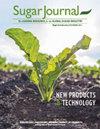离子交换稀汁软化采用分形技术
IF 0.3
4区 农林科学
Q4 Agricultural and Biological Sciences
引用次数: 8
摘要
尽管有许多明显的加工好处,稀汁软化从来没有达到标准单位操作在甜菜糖工业的地位。可用系统容量低,因此投资成本高,废水和运行成本问题一直是软化剂仅在特定情况下可行的障碍。无废弱阳离子软化技术的引入大大降低了操作成本,而与分形技术的结合使工艺规模大大缩小。本文提供的信息有助于重新评价稀汁软化的经济性。因此,列出了积极影响的过程区域,并评估了操作软果汁的总体财务效益。对于不同的模型案例给出了更具体的数字,代表了不同技术和能源效率标准的甜菜工厂,其活动长度是某些地区的典型。将结果与分形弱阳离子软化剂的估计安装成本进行比较,表明该技术很有可能成为甜菜糖工业大部分地区的标准单元操作。本文章由计算机程序翻译,如有差异,请以英文原文为准。
Ion exchange thin juice softening using fractal technology
Despite many obvious processing benefits, thin juice softening has never reached the status of a standard unit operation in the beet sugar industry. Low capacity of available systems and consequently high investment cost as well as waste water and operating cost issues have been impediments that made softener implementations feasible only under particular circumstances. The introduction of waste free weak cation softening resulted in significant reduction of operating costs while the combination with fractal technology allows cutting down the process size dramatically. The paper provides information, which is helpful to re-evaluate the economics of thin juice softening. Therefore positively affected process areas are listed and general financial benefits from operating soft juice are assessed. More specific figures are given for different model cases, representing beet factories of various technological and energy efficiency standards with campaign lengths as typical for certain regions. A comparison of the results with the estimated installed cost of fractal weak cation softeners shows a good potential for this technology to become a standard unit operation for substantial parts of the beet sugar industry.
求助全文
通过发布文献求助,成功后即可免费获取论文全文。
去求助
来源期刊

International Sugar Journal
工程技术-农艺学
自引率
33.30%
发文量
0
审稿时长
18-36 weeks
期刊介绍:
International Sugar Journal, first published in 1869, is a peer reviewed technical-trade journal focusing on latest developments in sugar technology and sugar industry. The journal embraces scientific and technical advances in agricultural production right through to the production of sugar crystal, as well as economic, trade and policy issues. Main topics include:
• sugarcane and sugar beet production
• front end operations
• cane and beet sugar manufacture
• sugar refining
• economics, trade and legislation and
• biorenewables (cogeneration, biofuels and biobased products)
Related topics, namely analysis, instrumentation, equipment and machinery, food and non-food uses of sugar and alternative sweeteners also form the focus of the journal.
 求助内容:
求助内容: 应助结果提醒方式:
应助结果提醒方式:


